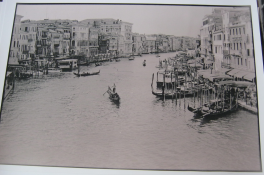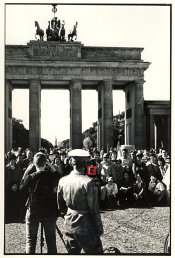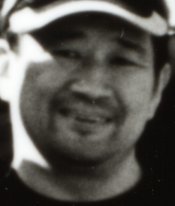Jump in. the water's lovely
I am not familiar with this enlarger, but I will make some general observations.
I like to go up to 20 x 16 whenever I have a negative that I consider worth the effort, and if my wife then gives the thumbs up it goes in the gallery on the wall in the hall. Remember you aren't expected to inspect it with a magnifying glass, viewers are going to be standing back several feet, so if it looks good held up to the face at 5 x 7, or at arms length in 10 x 8, it will look good at 20 x 16, up on the wall as you and your friends stand back to admire it.
I have never turned the head round and projected on the floor; too much hassle and as my enlarger is on a surface permanently flush against the wall I have nowhere to clamp the baseboard.
The first problem is projecting a 20 x 16 image onto an easel with selvage ie the space between the print area demarcated by the easel blades, and the outer extent of the easel. I minimise this by using my homemade borderless easel, which reduces that unusable area to ½ inch or 1 cm or so. In this fashion I find with my Durst DA900 that I can just get 20 x 16, but I have to use the full frame of the negative ie cropping is not possible. Using a 45 or 40 mm lens does not help; it is the distance from the centre of the projected image to the base of the enlarger column that precludes cropping. Still, a 20 x 16 is possible, and we are looking for a first class full frame negative .
See link: (there was a url link here which no longer exists)
Years ago, before I graduated to sophisticated enlargers with autofocus and Ilford MG 500 heads, I used a Durst 606, which I still have and often wonder why I ever gave it up. With this machine I was able effortlessly to go way beyond 20 x 16 projected on the baseboard ie there was quite a bit of scope for cropping. This was thanks to the cranked column extension seen in the picture, originally made by Gnome. These are rarely seen on eBay, and obviously your enlarger column needs to be of the same diameter. It may look a bit prone to mal-alignment but looking back at prints I made 30 years ago (now relegated to the upstairs landing), it was pretty good. Stand back 3 or 4 feet and the picture looks sharp to the edges; and from quite close-up too.Actually with a standard 50 mm lens there is not much scope for cropping, but with a 45 or even 40 mm lens extensive cropping is possible.
See link: (there was a url link here which no longer exists)
My DA 900 is designed for 6 x 7 120 negs, not 6 x 9; I find that if I enlarge to 20 x 16 from a 35 mm neg which has a similar height/width ratio to 6 x 9, it is necessary to slide the negative so that the segment I am enlarging is in the centre of the illumination ie slide the neg in the carrier so that the centre of your projected image is directly under the point of strongest illumination, ie directly below the centre of the light source, otherwise you get marked light fall of at one or other side of your print.








 .
.





